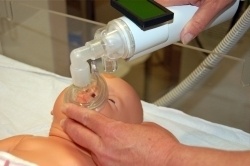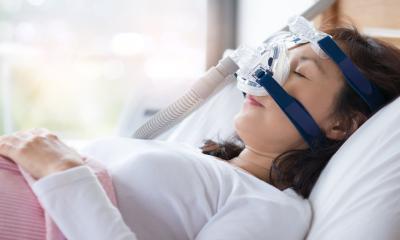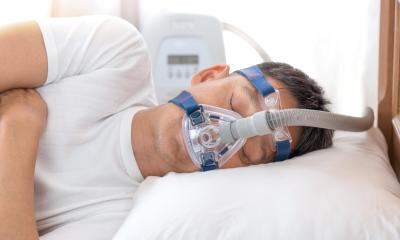KM Medical Unveil the Next Step in Neonatal Resuscitation at MEDICA 2008
Press anouncement from New Zealand
KM Medical, an innovative medical technology company based in Auckland, New Zealand, will unveil, for the first time in Europe, the Next Step in Neonatal Resuscitation and Transport Ventilation.

This automatic, portable neonatal resuscitator and ventilator has been designed to reduce the incidence of volutrauma and barotraumas.
These respiratory difficulties can lead to neonatal chronic lung disease (CLD), the major long-term pulmonary complication of preterm birth affecting about 20% of infants who need respiratory assistance.1 Ten million newborns worldwide each year need resuscitation assistance. More than 1 million babies die annually from complications of birth asphyxia.2
“Whereas current neonatal resuscitators control airway pressure only, the KM Medical Neonatal Resuscitator controls tidal volume, airway pressure and respiratory rate simultaneously. This is so important in neonates, who are so small and extremely difficult to ventilate,” noted Richard McCulloch, KM Medical’s Managing Director and co-founder.
“We also saw a huge gap in the Transport Ventilator market, as current units are large, heavy and expensive. Our prototype is the size of a torch, can use air as well as oxygen and can run off a battery pack, aircraft power, or a vehicle cigarette lighter therefore has very wide applications as a transport ventilator,” noted Gilbert Kuypers, Technical Director and co-founder of KM Medical.
KM Medical is developing two versions of the device, a recovery-table version with full facilities and a simpler version for transport. The device has attracted international attention as a finalist in the 2008 Bayer Innovation Awards for Research and Development.
A team led by Dr Enrico Haemmerle, Dept. of Mechanical Engineering, The University of Auckland, New Zealand, has headed prototype development. A working prototype will be unveiled at the KM Medical booth on the New Zealand Trade & Enterprise Stand, MEDICA Hall 17/A58.
References
1. Treatments in Respiratory Medicine. 4(5):347-359, 2005. Sweet, David G 1 2; Halliday, Henry
2. Respiratory Care 2003;48 (3):288-294 Neonatal Resuscitation, Wiswell, Thomas, MD
19.11.2008





